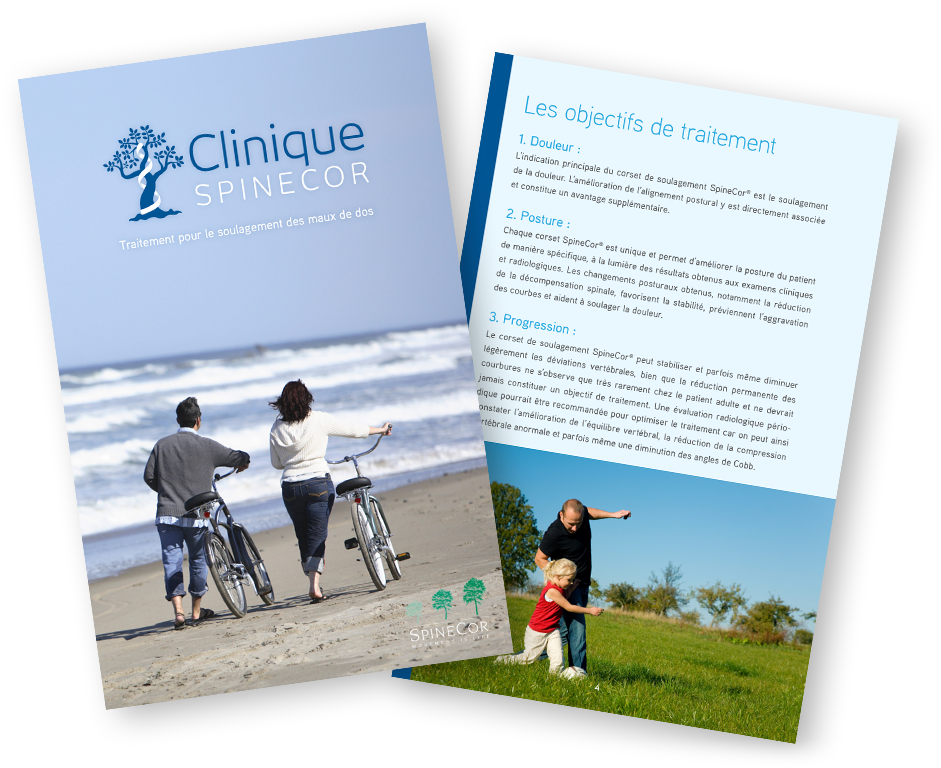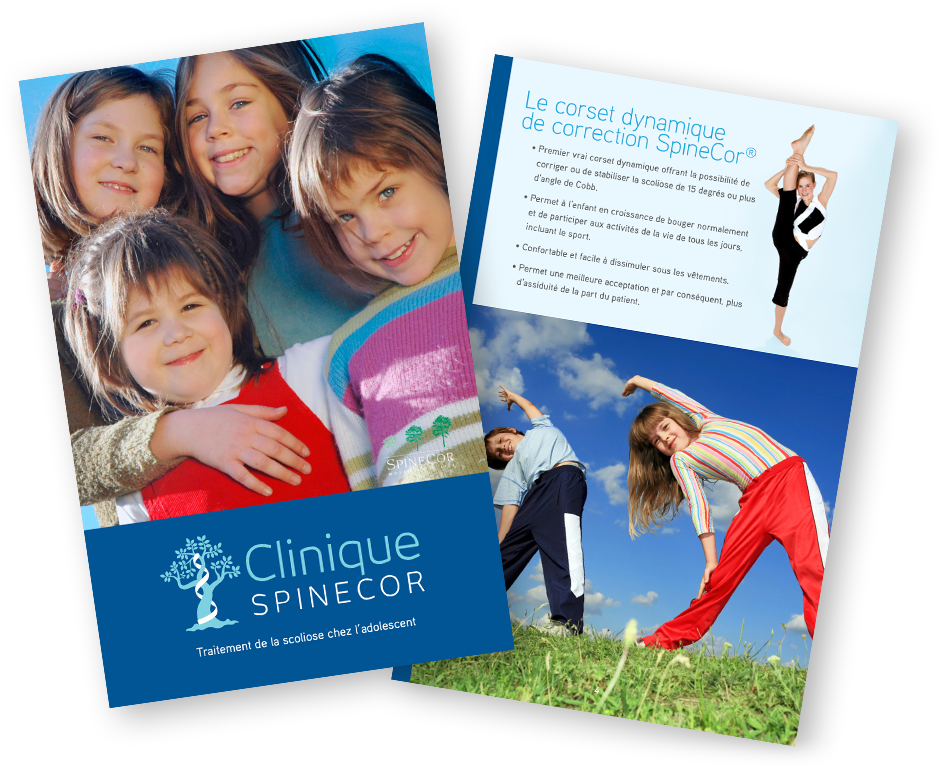SPINECOR TREATMENT
While it functions along the same principles for both, treatment objectives using the SpineCor® brace differ for children and adults.
SPINECOR® PAEDIATRIC TREATMENT
SpineCor® was originally designed to treat adolescent idiopathic scoliosis (AIS). Other therapeutic applications have been discovered since, namely for the treatment of hyperkyphosis.
Children and adolescents suffering from spinal deformities (scoliosis, hyperkyphosis) can benefit from the corrective action of the SpineCor® brace for two main reasons:
- Their spinal column is still growing and is therefore malleable. The abnormal curvature can thus be reduced or its progression halted. This state of suppleness will last until the ages of 15-16 or Risser 4*.
- What distinguishes SpineCor® is that it constantly stimulates the neuromuscular system allowing the child to integrate a correctional dynamic based on movement rather than immobilization (rigid braces).
* RISSER SIGN 
|
In adults the SpineCor® therapeutic approach allows for:
- pain relief;
- postural improvement through targeted re-education;
- reducing abnormal pressure on the spine, thereby halting curvature progression due to ageing.
While the results pursued by treatment with the SpineCor® brace differ for children and adults, the therapeutic principle upon which it based nevertheless remains the same.
The brace's elastic bands are precisely positioned based on the type of curvature the patient presents. They generate a corrective movement which gently obliges the patient to use certain muscles more when they move either as they go about performing their daily activities or various sports.
By improving the patient's postural alignment in such a way as to reduce the mechanical forces that promote curve aggravation, the SpineCor® brace not only influences posture and spinal configuration, but it also re-balances the forces exerted on the spine, thereby alleviating pain.
This postural rehabilitation also helps prevent spinal joint degeneration (osteoarthritis) which can lead to joint instability (spondylolisthesis, lateral listhesis, rotatory subluxation)*.

* SPONDYLOLISTHESIS Spondylolisthesis is defined as spinal joint instability due to the displacement of a vertebra relative to the one below it and is caused by overloading the supporting joint structures. In the case of forward displacement, it is referred to as anterolisthesis and in the reverse case as retrolisthesis. When the vertebral displacement occurs in both the coronal and axial planes, it is referred to as lateral listhesis or as a rotatory subluxation if the displacement occurs in the lumbar region. Those suffering from this type of joint instability may also benefit from treatment using the SpineCor® brace due to the added support it gives to the muscles surrounding the spine. The brace reduces the pressure exerted by the forces of gravity on the area affected by spondylolisthesis, thereby contributing to reducing pain as well as the risk of aggravation. |

 By restoring postural alignment to a certain degree, the SpineCor® brace contributes to decreasing what is known as the lever-arm effect (red line) and to alleviating the pressure exerted on the joints.
By restoring postural alignment to a certain degree, the SpineCor® brace contributes to decreasing what is known as the lever-arm effect (red line) and to alleviating the pressure exerted on the joints.
 Download our brochure: Treatment for alleviating back pain (PDF, French only)
Download our brochure: Treatment for alleviating back pain (PDF, French only)




 Download our brochure: Adolescent Idiopathic Scoliosis – Treatment (PDF, French only)
Download our brochure: Adolescent Idiopathic Scoliosis – Treatment (PDF, French only)